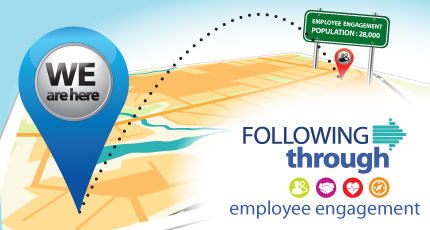
| WRHA Staff & Health Professionals Home |
 |
|
A message from Dave Leschasin November 20, 2013 Thank you to each and every one of you who took the time to complete the AON Hewitt Employee Opinion Survey this past June. A 41% response rate is considered good for health care and I was pleased so many of you took the time to tell us what you thought. You can't change what you don't know. Your survey feedback lets us know what needs improvement and where we need to make things better for employees and patient care. It showed us we have a need for culture change to improve things for employees and managers alike. Culture change typically takes years, but your input provided us with some key starting points for action. It is my recommendation to continue to ask you every year for your thoughts; that will provide us with accurate, timely information about how we're doing. The data from the survey provided us with a snapshot of where we're at right now. Now that the Region is aware of what's working and what's not, we know what we need to prioritize and where our efforts are most needed. That includes getting to the root causes of some of these concerns, so we can be strategic about addressing them and creating better results. The issues you brought to light will be addressed at different levels: the region, the area/site/facility and within individual organization units. We do not have the resources to fix all that requires improvement and will therefore need to prioritize our action plans. Whether you see improvement or not probably depends on whether the region's, site's or unit's priorities align with your individual concerns. I'm determined to get results and make a difference. I'm encouraged that the Region's executive team also wants results in employee engagement. They can clearly see the link between engaged employees and patient care. As a result, they are offering their understanding, commitment, support and passion to efforts to create an engaging, healthier and more fulfilling work environment for you. What does that mean? Employee engagement is defined as capturing the hearts and minds of employees. What does that look like? It means employees take pride in where they work and brag about it to friends, family and coworkers. It means people want to stay with their organization - and not just to meet their retirement requirements - because they want to make a difference. It means they strive beyond the work they're doing and want to make things better for employees and patients alike. Whereas disengaged employees fight change, engaged employees initiate change. Many of you are engaged. In fact, 128 of organization units in the Region scored 65% or higher on engagement. That's a large number, and it's good to know there are a number of you who are passionate about your work. Your hearts and minds are captured, and you bring them - along with your A game - to work everyday. You see challenges as opportunities to be creative and find innovative solutions. I'm happy to hear that and hope you'll continue doing what's working. Your contributions are welcome, necessary and meaningful to health care delivery so please keep making them. We need your hearts and minds at work to help create healthy, vibrant communities. When you're engaged in your work environment, you want to be there and give your best. Showing up but “phoning it in” isn't an option in health care. Being at work without really being at work and doing your best isn't an option. Do you want the distracted, disengaged person caring for your loved one? Or the present, passionate and engaged person? Can we do it? Can we actually improve employee engagement as a health region? Yes. We did it when I worked at St. Boniface Hospital (SBH). In 2006, employee engagement at SBH overall was at the low rate of 41% and managers only at 61%. In 2013, those numbers are substantially improved to 58% and 88% respectively. You could feel a difference. Riverview Health Centre has also done this survey for four years now and has consistently scored at around 65% staff engaged. For those of you who think the survey results are hopeless and that nothing will be done, the survey revealed that to us also. Thirty-six per cent of you believe the Region won't do anything with the information we collected. I invite your healthy scepticism; it'll keep us focused with a sense of urgency. But the truth is that if St. Boniface Hospital is an example of what can be achieved in health care, there is hope. It will take time. It won't happen overnight. But it can happen. We'll keep you posted as this process unfolds. Watch Health Care Connection for the latest information about employee engagement and bookmark www.wrha.mb.ca/survey, the one-stop hub for everything you need to know. I believe every employee has the capacity to be engaged. We need to create an engaging work environment where you want to show up and find opportunities to make a difference. I invite you to be part of this exciting culture change that will help you reignite your professional passion and inspire you to put your hearts and minds into your work every day. Dave Leschasin |
 |
This site is not intended to be used by the general public. If you are not a health care professional or a WRHA staff member, please refer to our public website. |